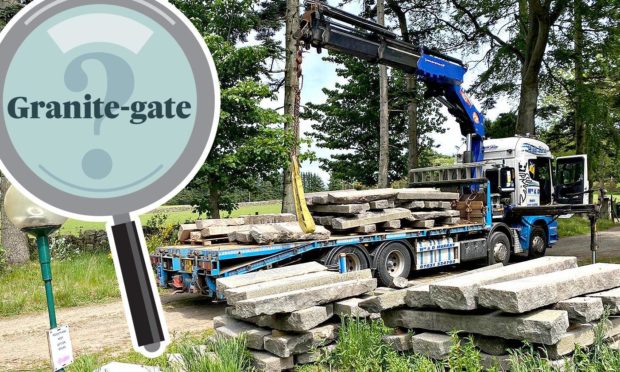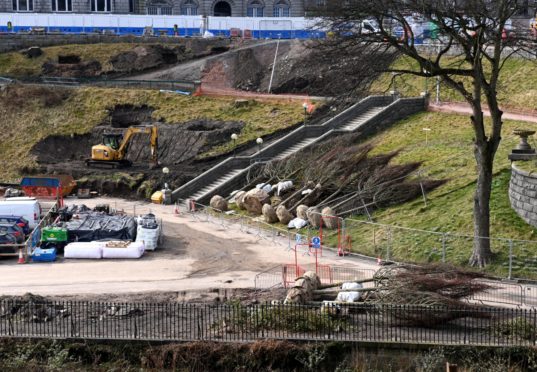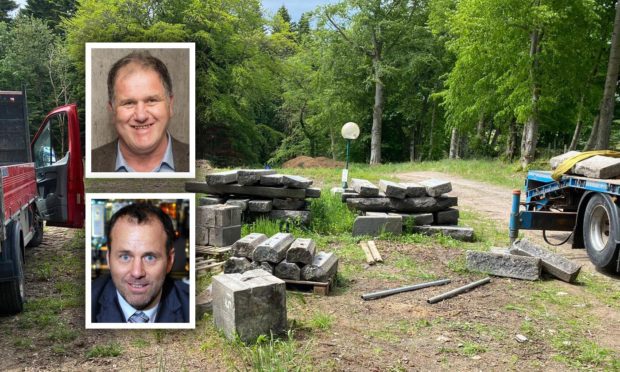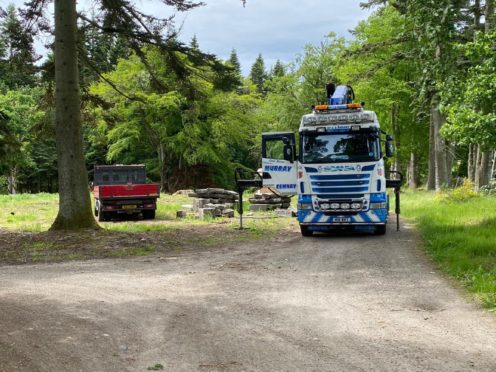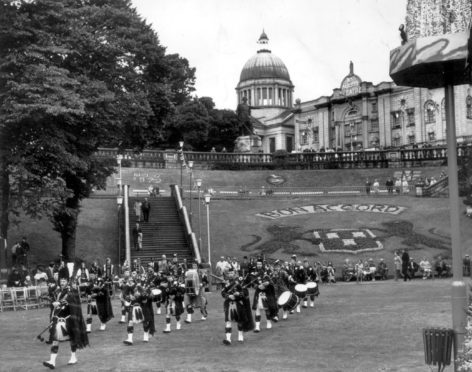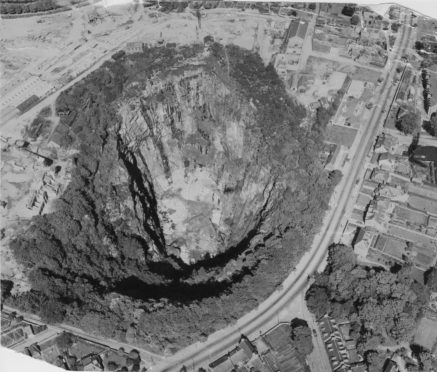The mystery of a missing granite staircase has rocked Aberdeen this week, with a possible police investigation being launched into how dozens of precious stone slabs ended up on the property of a high profile businessman.
Here we unpack the saga, and explain just why granite matters so much to the people of the city.
How did this emerge?
Last week, rumours began to circulate that huge granite slabs which had formed part of a staircase at Union Terrace Gardens had been removed from the council’s possession while the city centre beauty spot is undergoing a £28 million renovation.
By Monday, we received a photo of the stone in question being stowed on private land.
The image appeared to come as a surprise to Aberdeen City Council, and officers promptly announced an investigation into what had happened.
Why was the council so alarmed?
There were fears the slabs being removed could mean they might not be returned to the historic park, despite the local authority previously issuing assurances that all of the old granite would be reused in the project.
There was some speculation it may have been taken away to be crushed, a move which locals said would be a “disaster” for the city’s “irreplaceable granite heritage”.
At that point though, the council was unable to confirm that the granite had even been removed from the site without permission.
What happened next?
Liberal Democrat councillor Ian Yuill himself went to see the slabs, and pushed for the probe to take place into how they ended up on private land.
He said: “I was put in touch with the person who had these and I subsequently was invited to see the stones for myself.
“There are a large number of pieces of granite, which look like they may have come from UTG, sitting in a private garden.”
Mr Yuill said the new owner confirmed they “would be happy to return these should the council wish to have them”.
Was the law broken?
By Tuesday, council investigators had spoken to the sub-contractor involved and confirmed that the slabs were indeed from Union Terrace Gardens.
Top brass were left considering whether the builder had breached an agreement to ensure the granite was kept safe at all times.
Case closed?
Not quite.
Things took a dramatic twist on Wednesday when we tracked the granite down to land owned by local businessman Mike Wilson, who runs several bars as the boss of Epic Group.
We arrived at the secluded spot on the outskirts of Aberdeen just as the dozens of slabs were being loaded onto a flatbed truck.
That afternoon, the sub-contractor at the heart of the drama, Graeme Cheyne, told us that the controversy was little more than an innocent misunderstanding.
Mr Cheyne, who years earlier had helped build Mr Wilson’s new home at Cults, said he was aware of the rough patch of land there and decided to store the granite there in an act of desperation.
He told us that the stack of around 50 stones – and one of the Victorian park’s recognisable globe street lamps – had been taken away from Union Terrace Gardens late on a Friday afternoon.
But Mr Cheyne said he had been unable to store them in his yard at Torry as planned due to cars being parked near the entrance.
With time closing in on him, and unable to return the stacks to the site as it was nearly stopping time, he claimed he decided to hide them in the safest spot he could think of and “face the consequences” later.
Did Mike Wilson know about all this?
Both Mr Wilson and Mr Cheyne say the bar owner had no prior knowledge of his land being used to store the slabs.
Mr Cheyne said: “I didn’t even ask Mike if I could store it there, I just knew there was a bit of spare land there doing nothing.”
Mr Wilson told us: “There are not many folk that could lift those things so I think it was as remote a site as Mr Cheyne could think of.
“I had no desire for it to be on my land, I don’t have any use for it – short of building a helipad.”
Apart from building the house a few years ago, do Mr Cheyne and Mr Wilson know each other?
Yes.
Mr Wilson is suing Mr Cheyne for £1 million over claims toxic waste material was stashed under his terraced garden in Craigton Road during the work. He chose the patch of land at the heart of the spat to dump the masonry.
Is it linked to the court case then?
Mr Cheyne told us: “The court case has nothing to do with this.
“It’s a personal matter.”
What is the council doing now?
The local authority referred the matter to the police, “to investigate whether any criminal intent existed in the removal of granite and other objects from UTG by a sub-contractor”.
Officers have now begun inquiries, speaking to key players in the saga. Councillor Ian Yuill confirmed at the full council meeting on Monday, June 28, that he had been contacted, having verified the granite find when approached by Mr Wilson.
Meanwhile, Town House chiefs area conducting their own probe, including an audit of all UTG granite, lights and even the railings and heraldic shields from the pocket park behind the William Wallace statue in Rosemount Viaduct.
Results will be presented to the council’s audit committee upon completion.
Questions remain over the whereabouts of the rest of the granite from the park.
Why does granite matter so much to Aberdeen?
While the rock is of considerable financial value, it has priceless historic importance to the city.
Dominic Fairlie, chairman of the Aberdeen Civic Society, told us why people feel so strongly about it.
He said: “We need to respect our heritage, and the local Aberdeen granite is a material you can no longer get very easily.
“Therefore, the protection of it should be a priority for everybody involved in development in the city.
“Aberdeen is very beautiful, and one of the reasons it’s beautiful is because of the old granite which lasts for generations.
“We should be doing everything within our power to make sure it lasts into the future.”
The city is built extensively of silver-grey granite from quarries within and around Aberdeen.
But as the industry grew throughout the 18th and 19th centuries, Aberdeen became a world-renowned producer of granite.
Waterloo Bridge in London, the terrace of the Palace of Westminster and the Forth Bridge were constructed with granite from Aberdeen.
